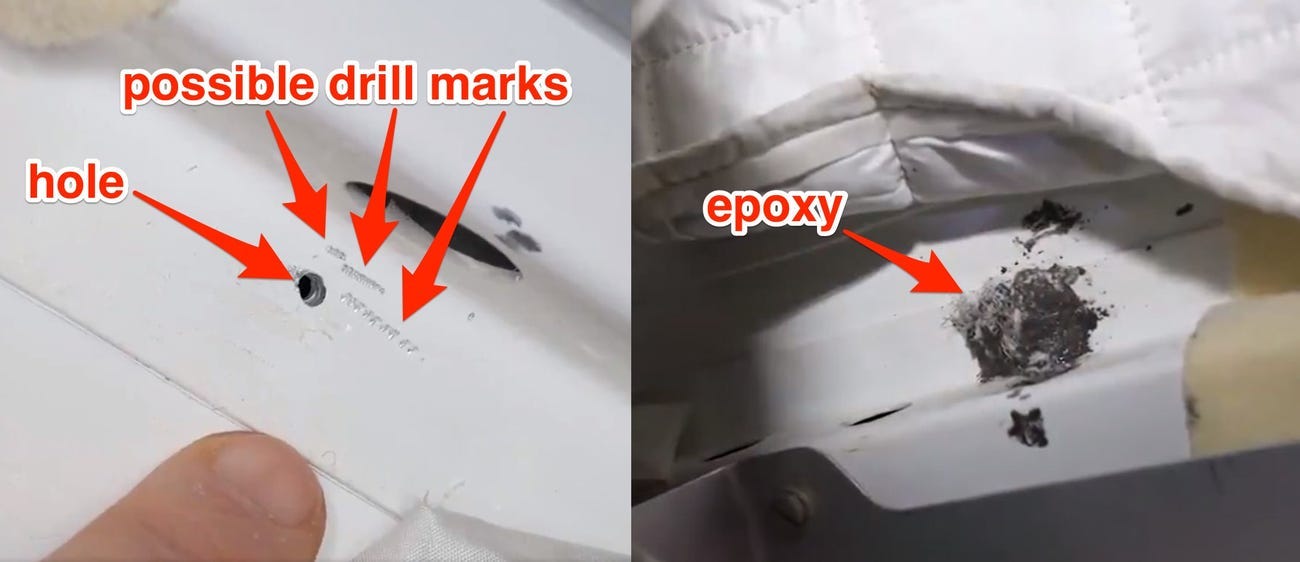The International Space Station has been leaking for more than a year.
While the station is perpetually losing some air, officials first noticed an increase in that airflow last September. At the time the leak wasn't major, but this summer they saw an uptick in that already higher-than-usual rate.
So in late August, the three crew members aboard the station - the NASA astronaut Chris Cassidy and the Roscosmos cosmonauts Anatoly Ivanishin and Ivan Vagner - hunkered down in one module of the station and sealed off the others. After closing the hatches, they conducted leak tests on each section.
But their data didn't reveal leaks in those sections.
That leaves only two modules that could be leaking: the ones the crew didn't test because they were inside them while monitoring the rest of the station.
One is the Zvezda Service Module, which provides life support for the station's Russian side. The other is the Poisk Mini-Research Module 2, which serves as a port for docking spaceships and a place where crew members prepare for spacewalks.
"With the crew living and working in these modules, it was impossible to achieve the proper environmental conditions necessary for this test," a NASA spokesman, Daniel Huot, told Business Insider.
NASA and Roscosmos, Russia's space agency, are working to identify a "window of opportunity" to test those remaining modules for leaks, he added - either by finding a way for crew members to safely isolate the untested modules or by using specialised detectors that wouldn't require sealing the sections off.
In the meantime, Huot said, "the crew is in no danger and the space station has ample consumables onboard to manage and maintain the nominal environment." Consumables, in this case, refers to breathable air.
Zvezda isn't the only life-support module on the station
NASA didn't consider the leak it detected a year ago to be major. And other priorities, like spacewalks and crew exchanges, kept the agency and the ISS crew too busy to collect enough data about the problem.
But once the leak rate increased, the agency decided it was time to do something about it. If the leak were to quickly grow even bigger, the pressurised air-supply tanks that NASA sends up to the ISS on resupply missions might not be enough.
The Zvezda module, which launched in July 2000, was the first liveable part of the space station in orbit. It provides the Russian half of the station with oxygen and drinkable water, and it's equipped with a machine that scrubs carbon dioxide from the air.
The module also contains the section's sleeping quarters, dining room, refrigerator-freezer, and bathroom.
But Zvezda isn't the only section of the orbiting laboratory that provides life support. The US side of the station has its own fully functioning life-support system, with oxygen generators, a kitchen, and drinkable-water systems.
So theoretically, crew members could stay on the US side while conducting further tests.
The problem, though, is that Zvezda connects directly to the Soyuz spacecraft that's attached to the ISS and that the astronauts and cosmonauts need to use to get back to Earth.
Closing the module's hatches and testing it for leaks would therefore make it tough for Ivanishin, Cassidy, and Vagner to access the Soyuz quickly in case of an emergency, should they have to make a quick getaway.
However, there's a slim chance that earlier leak tests missed something. So on Thursday, crew members used an ultrasonic leak detector to examine several windows, valves, and seals within previously tested modules, just in case.
The tool measures noise caused by "turbulent airflow" - in this case, an air leak that's too quiet for humans to hear.
The crew tested windows in the Kibo section on the US side, as well as several other windows on the Russian side. Engineers on Earth will analyse the data in the coming days.
And this isn't the first leak on the International Space Station
This isn't the first leak found on the space station's Russian side, nor the most frightening.
In August 2018, crew members discovered a 2-millimetre drill hole in part of a Russian Soyuz MS-09 spaceship that was docked to the station at the time.
 (NASA via Chris Bergin/Twitter)
(NASA via Chris Bergin/Twitter)
Above: At left, a hole that appears drilled into part of a Soyuz spacecraft at the International Space Station. At right, a patch made by the crew using epoxy.
That hole seemed to indicate a manufacturing defect - it appeared that someone on Earth had attempted to plug the hole with paint, but that paint broke off after the Soyuz reached the space station.
So in December 2018, two cosmonauts donned spacesuits and floated to the outside of the Soyuz ship to study the hole in detail. They spent nearly eight hours hacking away at the insulation with a knife to find and document it.
After that, the crew patched up the hole with an epoxy sealant.
Roscosmos has stayed fairly quiet about that incident ever since.
"We know exactly what happened, but we will not tell you anything," the head of Roscosmos, Dmitry Rogozin, said at a youth science conference in September 2019, according to the Russian state news agency Ria Novosti.
This article was originally published by Business Insider.
More from Business Insider:
#Space | https://sciencespies.com/space/an-elusive-leak-on-the-iss-has-been-narrowed-down-to-2-russian-modules/
No comments:
Post a Comment